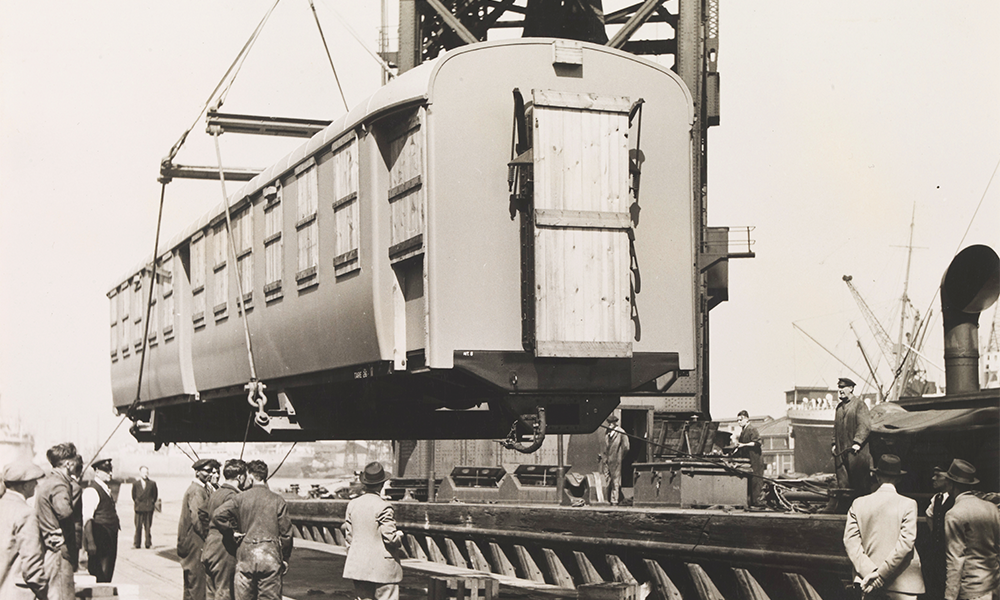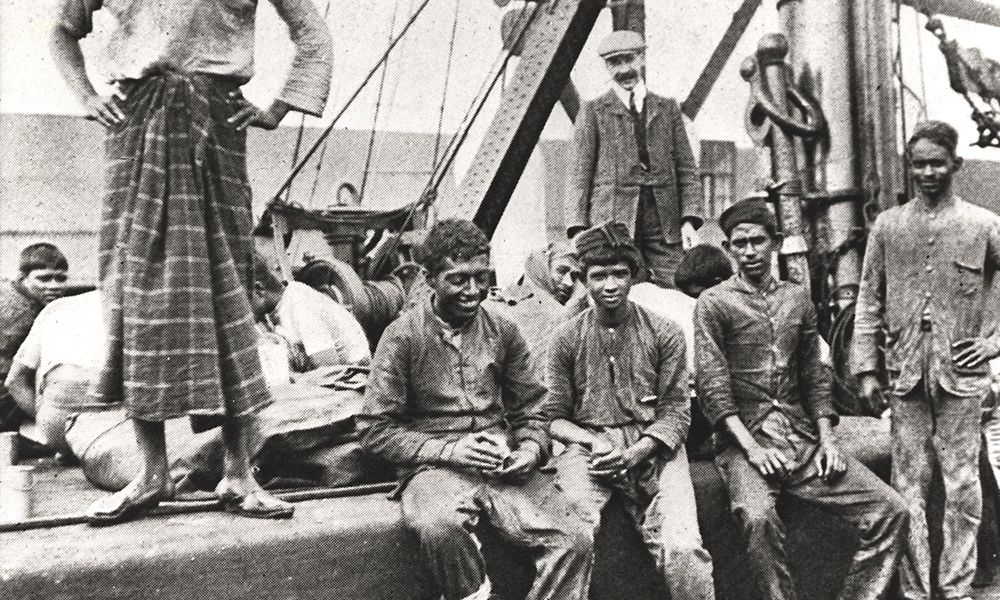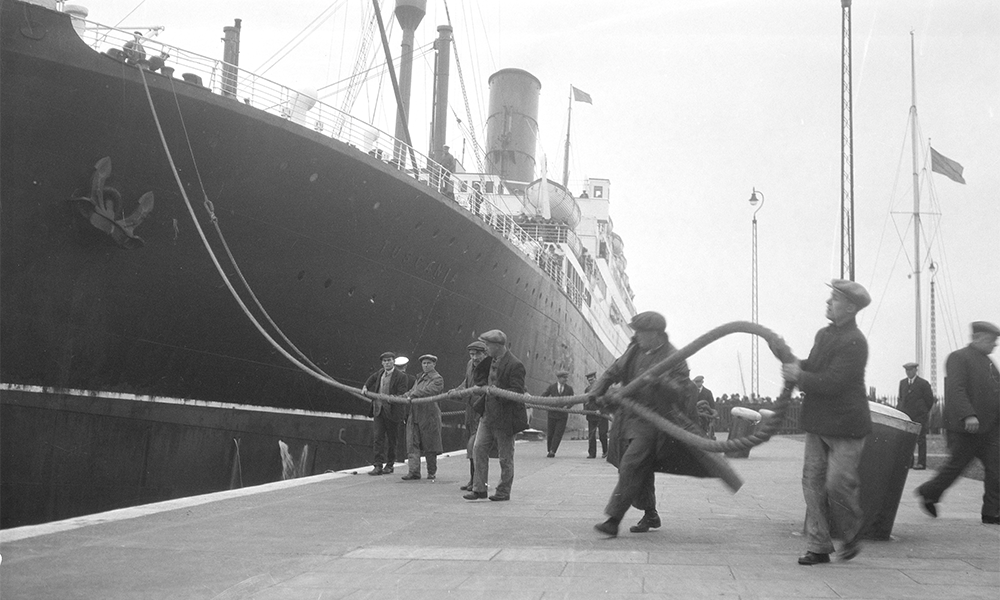The Museum Of London’s multi-sensory display is created using the Port Of London Authority archive

Subscribe to Wharf Life’s weekly newsletter here
Vibrant colour, sounds, sights and smells will fill the major exhibition space at Musuem Of London Docklands when it opens its doors to visitors again on October 22.
Inside, the freshly joined pine of packing crates, resplendent in blues, reds and printed with photos, house the cargo of London: Port City and are set to tease and provoke the eyes of viewers as they explore the displays.
Held in partnership with the Port Of London Authority (PLA), the exhibition is both a look into the past and a snapshot of the present, as it explores the impact that the arrival and departure of cargo has had on the capital since 1800.
Taking the era when the building that houses the museum itself would first have been used as a warehouse as its starting point, the display draws heavily on the PLA’s vast archive and includes 222 objects that make up an interactive timeline, revealing stories of smuggling and infrastructure.
“The museum has been managing the archive for quite some time and there are some small aspects of it already on display there, but this is the first time it has been mined to this extent,” said co-curator Claire Dobbin.
“The port and its impact on London is massive – not just historically, but today.
“Handling over 50million tonnes of cargo a year, from our morning coffee to the clothes we wear and materials for the buildings we live and work in, it plays a vital role in our daily lives and national economy.
“It’s moved down river – and for many of us out of sight – but the port is still very much part of London. Our riverside cityscapes are also peppered with echoes of its history in its architecture and street names.
“Our cultural landscape too has been shaped by centuries of global exchange – by people, products and ideas passing through the port.
“This influenced and enriched language, diversity and communities that underpin the city we know today.”

Inside the exhibition, visitors will see archive photography and video, hear oral history recordings – first-hand accounts of life on the docks – and even be able to smell the odours of some of the cargoes received by the port.
“We didn’t want it to be a chronological display – that would have been too dry,” said Claire. “Instead we’ve aimed for something more interactive, so that people can connect with things.
“Everybody who comes will connect in some way, because they are here in this building. Many will come who are from the area and know some of the stories very well. We hope everyone will find some relevance in the displays.
“We knew we wanted to focus on the impact of the port on different communities in London and also the lived experience of the people working on the docks.
“For that we’ve drawn a lot on the oral history collections, which are fantastic. There are voices as well – two sections where you hear lived experiences and little anecdotes. The oral histories were done in the 1980s, so some people talk about the beginning of the 20th century, and it’s amazing to hear that first-hand.
“This exhibition has been a real team effort – staff at the museum have spent huge amounts of time going through the archives both physical and digital to select exhibits.”
The PLA itself was created in 1909 to take over the running of the Port Of London from myriad rival private companies that built enclosed dock systems throughout the 19th century as an alternative to the comparatively poor security of the Pool Of London’s wharves.
“Because we’re covering the period from 1800, the team has been trawling through huge amounts of material such as minute books from the companies that pre-date the PLA,” said Claire.
“The wonderful thing about archives and documentation is that what they captured is what needed to be minuted at the time – what was important to that company in that meeting. It’s a different perspective.
“The real beauty of an archive exhibition is the bringing together of a range of different material.
“For example, we have a diving helmet in the exhibition, which we wanted to show, but equally wanted to bring to life, and we were able to find a film of people using the equipment.
“Honestly I could only watch it once as the thought of being under the Thames even with modern gear gives me nightmares.
“Then you have documents – we have one of the ledgers from 100 years ago showing the offloading – exactly what was coming in.
“Samples would be taken to document the quality so we’ve got some sample pots of spices and other commodities.
“What comes through in the oral histories is that working on the docks was a sensory experience, quite a harsh environment.
“People would say you could tell where you were in Docklands by the smell of the warehouses.
“We wanted to recreate a sense of that as well as what things looked like, so there are various smells people can experience.”

The exhibition is also about the titanic enterprise that is the modern operation of the PLA.
“Right from the beginning we wanted to bring the docks to life and that means the current practice of the port, which is very much hidden from central London,” said Claire.
“I didn’t know much about it at all, when we started this project – I probably knew more about the historical docks than I did about the current operation and the impact it has on our lives. So we wanted the exhibition to be three-dimensional, to show the scale and dynamism of the PLA today.
“The design is a big part of the exhibition, with lots of interaction, but we wanted to get lots of hard facts in as well. I hope visitors will be interested to learn more about where they live and work and that they see the area through new eyes on leaving.”
Laid out thematically, highlights include the opportunity to discover the stories behind 80 words, phrases and place names that have their origins in the Port Of London with a focus on the its relationship to the slave and sugar trades, including a document commemorating the unveiling of the statue of slave owner and merchant Robert Milligan, which was removed from outside the museum in 2020 in response to the Black Lives Matter protests.
The exhibition will also feature Trade Winds: London a new work by artist Susan Stockwell using archive material to explore trade, economics, migration and empire.
London: Port City runs until May 8, 2022.
Entry is completely free although tickets should be booked online. Donations to the museum are welcomed.




